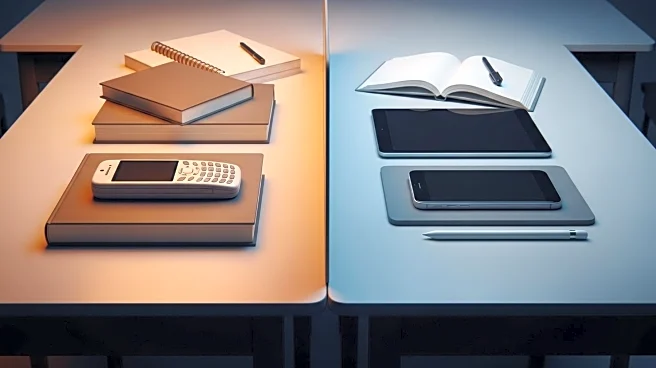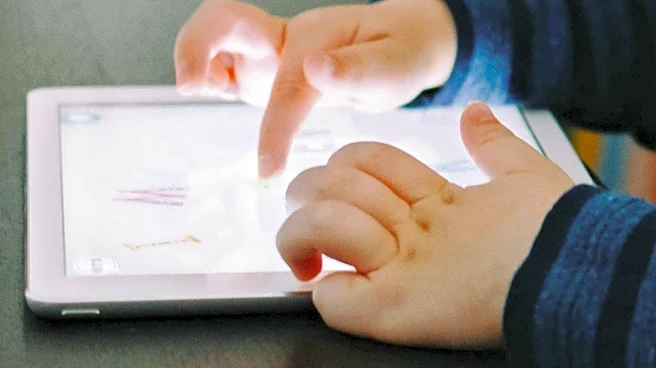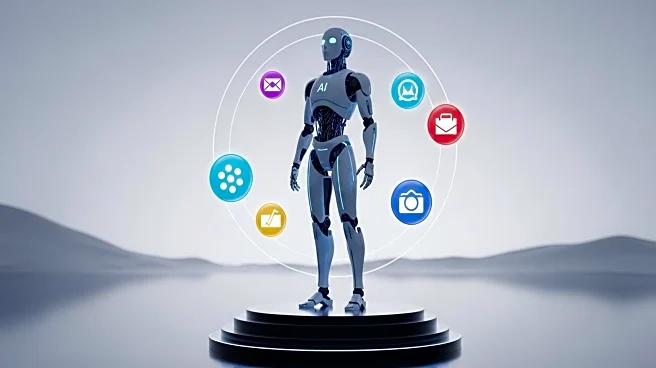What's Happening?
A new cellphone policy in schools, aimed at reducing student distractions, is inadvertently causing tension among teachers of different generations. The policy requires students to store their phones in magnetic pouches during class, a measure that has been implemented smoothly. However, the enforcement of similar expectations among teachers is revealing a cultural divide. Younger teachers, who grew up with digital technology, view their phones as essential tools for personal and professional use, while older generations may see them as distractions. This divide is not just about phone usage but reflects deeper issues of trust and professional boundaries within the school environment.
Why It's Important?
The situation underscores the broader challenge of managing generational differences in the workplace, particularly in educational settings. As schools strive to create environments conducive to learning, they must also navigate the complexities of staff dynamics. The tension between enforcing uniform policies and respecting individual professional practices can impact teacher morale and the overall school culture. If not addressed, these issues could lead to a fragmented work environment, affecting collaboration and the quality of education. Understanding and bridging these generational gaps is crucial for fostering a supportive and cohesive educational community.
What's Next?
School leaders may need to reconsider how policies are communicated and enforced among staff. Engaging teachers in discussions about the rationale behind policies and their practical implications could help build a shared understanding and respect for diverse professional practices. By fostering open dialogue and collaboration, schools can work towards policies that accommodate generational differences while maintaining a focus on educational goals.
Beyond the Headlines
This issue highlights the evolving nature of professionalism in the digital age. As technology becomes increasingly integrated into daily life, workplaces must adapt to new norms and expectations. The challenge lies in balancing the benefits of technology with the need for personal interaction and presence, a balance that is particularly delicate in educational settings where role modeling is key.










